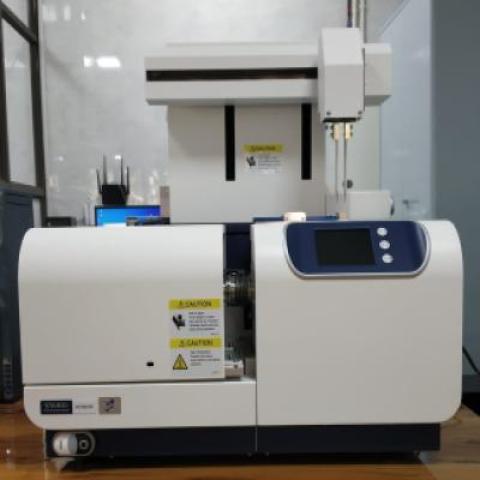
Category
- Material Characterization » Thermal Characterisation
Booking Details
Facility Management Team and Location
office.saif@iitb.ac.in
022- 2576-7691
nmagadi@iitb.ac.in
022- 2159-6889
Facility Features, Working Principle and Specifications
Simultaneous Thermogravimetric Analysis is a method in which thermogravimetry and differential thermal analysis are combined and measured simultaneously by a single apparatus.
Thermogravimetry (TGA) is a technique that measures mass change in a sample as a function of time and temperature, and it is used to detect evaporation, decomposition, oxidation and other effects of temperature change that cause mass changes.
Differential Thermal Analysis (DTA) measures the temperature difference between a sample and a reference as the temperature is increased. Changes in the sample, either exothermic or endothermic, can be detected relative to the inert reference. Thus, a DTA curve provides data on the transformations that have occurred, such as glass transitions, crystallization, melting and sublimation.
Instructions for Registration, Sample Preparation, User Instructions, Precautionary Measures and Charges
Charges (including 18% GST) *For Thermal Analysis, standard ramp is 10 ℃/min. Heating rates less than standard rate will be charged by hours:
|
Applications
Changes in mass due to decomposition, oxidation, evaporation, or combustion.
Volatilization rate of materials, Moisture content & Solvent content.
Thermal Stability for quality assurance and safety purposes.
Kinetics analysis.
Additives, Polymer content, Filler content, etc.
Glass transitions, Endothermic(Melting) and Exothermic reactions (Crystallization)
